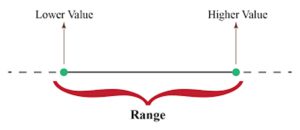Self-compassion or tough love?
There are the stereotypical roles we...
Read MoreIshita (she/her) is based out of Raipur Chhattisgarh. She has spent 8 years in Madhya Pradesh and 7 years in Karnataka in pursuit of her education.

When someone says the word ‘therapy’ a classic image comes to mind. A therapist with a notebook and a client sitting on the opposite side, doing what? Talking. The process has been reduced to verbal dialogue, wherethe client shares their problems and the therapist offers solutions. Bottom up therapies, however are quite different.
Don’t get me wrong, this therapeutic approach has worked well for decades and is a great way to help clients in settings where therapy is short, time limited and offers temporary solutions. It helps clients function on a daily basis but doesn’t address why they get stuck in never ending repetitive patterns, most of which seem to operate at a pre conscious and physiological level.
Human beings can’t be reduced to verbal communication. Think about times when you know your mom is mad, or your colleague is in a good mood. They don’t need to tell you how they are feeling, in fact a lot of times your partner might tell you ‘I’m not mad’ and might be quite upset. What tells you that they are upset despite stating otherwise? Their facial expressions, hand gestures, forced smiles & hunched shoulders are an indication of their mood state. How then, can we rely solely on verbal accounts of a person’s problem?
The irony lies in the fact that the very reason we are unable to regulate our emotions is because we are disconnected from our bodily sensations and are lost in thoughts, almost like an ‘auto pilot’ mode. We are not aware about experiencing thoughts, one thought leads to another and then another till werealizewe were zoned out instead of doing a task at hand.
Bottom-up therapy approaches focus on bodily, emotional and sensory experiences. The goal is to become aware of shifts in your body. They acknowledge that thoughts can be dysfunctional, but don’t delineate them to be the root cause of mental health problems. Instead, they state that our nervous systems get attuned to the emotional states we are exposed to in childhood. Higher the anxiety and anger we face growing up, more the nervous system will be used to facing those emotions and experiencing them ourselves. On a very pre conscious level, we will choose to be in friendships and relationships that make us feel stressed. Think of the concept of range we learnt in statistics.

For someone who grew up in a dysfunctional household, the higher and lower value of their emotional range will be wider and distressing emotions, more pervasive. That means the number of emotional triggers throughout the day will also be more. Since body focused or bottom up therapy emphasizes on the nervous system, it can identify how often and how intensely someone experiences emotions. How then do we alter the emotional range in therapy if not just by talking?
That’s where the beauty of bottom-up therapies comes in. Some techniques used include breathwork, imagery, grounding, mindfulness meditation and even yoga. Such techniques ensure that the client is feeling safe and relaxed in their body and nervous system, as opposed to the distressing emotions they have been used to.This is accompanied by the more conventional talk-based therapy and voila, here’s the perfect recipe for a therapeutic approach that is holistic and extremely relevant in an Indian setting.
Have thoughts about this? I would love to hear from you! Get in touch ?